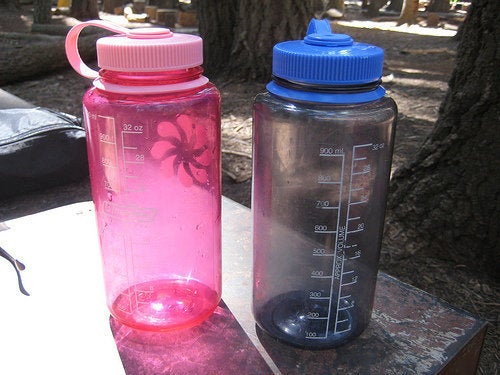
The mass spectrometers needed to measure traces of chemicals and their byproducts in human samples of blood and urine are big beige machines that, to the untrained eye, look like something you might find at your neighborhood photocopy store.
Commanded by researchers and technicians in clean suits seated at computer keyboards, these exquisitely sensitive instruments spin out findings that show how the chemicals we rely on to make life easier and more convenient have the unintended effect of polluting us.
The measurements, called biomonitoring, tell a sobering story: The U.S. population is widely exposed to the phthalates in plastic, the bisphenol A in food and beverage cans and the flame retardants in furniture. Indeed, the U.S. Centers for Disease Control and Prevention - home of the state-of-the-art biomonitoring lab described above -- has so far reported on 148 chemicals or their byproducts in the blood or urine of a representative sample of the U.S. population.
A new CDC report that will include about 100 additional chemicals is expected before the end of the year.
We've learned from biomonitoring that we're all poster children for the era of "better living through chemistry." This unsettling information has helped set the stage for the Kid Safe Chemical Act, which Sen. Frank Lautenberg, chairman of the Superfund, Toxics and Environmental Health subcommittee, promises to introduce soon.
Kid Safe, in part, would put the burden on chemical manufacturers to prove that chemicals are safe for infants, children, the developing fetus and others who are especially vulnerable. It is the first real attempt to update our lamentably inadequate toxics laws in more than 30 years.
Last week, we heard from the U.S. Government Accountability Office that the Environmental Protection Agency could do much more to incorporate biomonitoring into the process of determining threats posed by our unwitting exposures to hazardous chemicals in everyday things.
Indeed, the GAO recommended that the EPA develop a comprehensive research strategy to improve its ability to use biomonitoring data in risk assessments. It also urged the agency to request authority from Congress, if necessary, to obtain biomonitoring data from chemical manufacturers.
Sen. Lautenberg called the GAO report "proof positive" we need a law like Kid Safe, which would unquestionably give the EPA better tools - including the use of biomonitoring - to protect Americans from toxic chemicals. Another key policymaker, Sen. Barbara Boxer, who chairs the Environment and Public Works Committee, is eager to see the EPA do more to incorporate biomonitoring into assessing toxic risks.
Getting industry to cooperate on biomonitoring may not be easy. The American Chemistry Council, whose members include Dow, DuPont, Monsanto and dozens of other chemical companies, issued a statement last week describing as "problematic" the GAO's call for the EPA to consider having companies conduct extensive human biomonitoring.
Nevertheless, biomonitoring data is essential to chemical policy reform. For too long, the chemical industry has been shielded by toothless toxics laws that have kept us in the dark about the risks of everyday toxics. Under our current system, ignorance equals safety.
While the presence of a chemical in the human body does not, alone, mean it causes harm, biomonitoring data gives risk assessors essential information for determining if it does.
We not only have a right to know what's in us, but this knowledge, no matter how disturbing, is essential for public health.
First posted on Kid Safe Chemicals Act blog.
Nena Baker is an investigative journalist and the author of The Body Toxic: How the Hazardous Chemistry of Everyday Things Threatens Our Health and Well-being (North Point Press, 2008).